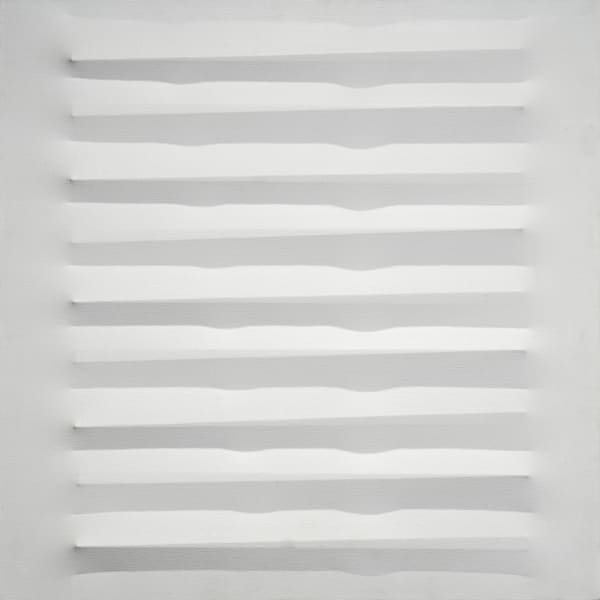Agostino Bonalumi Italian, 1935-2013
A leading figure of the Italian avant-garde, Agostino Bonalumi explored the plasticity of the canvas in his object paintings and contributed to the emergence of irregularly shaped canvases in the postwar period. “My generation lived through the academy of the Arte Informel, when it was triumphant, and at a certain point that expressiveness which was purely appearance and not form, was not enough,” Bonalumi, who thrice exhibited in the Venice Biennale, once said. An ally of the German artist group Zero, Bonalumi—along with peers and friends Enrico Castellani and Piero Manzoni—was inspired by Lucio Fontana’s sliced canvases. He elaborated upon Fontana’s work, developing what he called “extroflexions”—intricate stretchers that molded his vinyl-coated monochromatic canvases and suggested a force pushing out from beneath. In the 1960s, Bonalumi expanded his materials to include metals, and he enlarged the scale of his work, ultimately creating installations.
Agostino Bonalumi was an Italian abstract artist known for his principal role in the Post-War avant-garde.
Agostino Bonalumi was born in 1935 in Vimarcate (Milan). A real self thaught painter, Bonalumi started exhibiting at a young age and in 1958 formed a cooperative working group with Castellani and Manzoni, giving birth to the Bonalumi Castellani Manzoni group. He also became involved with the Azimut gallery run by his two collaborators who also published the formative Azimuth magazine. The influence of Lucio Fontana figured into heavily his practice, as did his association with the ZERO movement.
In the 1960s, his inventive “extroflections”—shapes that emerged from taut canvas impressed into relief—were his responses to Arte Informel abstractions of the 1950s. His monochromatic “painting-objects” (pittura-oggetto) broke through the two-dimensional picture plane and engaged with space and texture in novel ways. To be in the presence of art was important to the painter and sculptor, as he had said that “beauty has to be experienced, not described.”
Bonalumi died on September 18, 2013 in Monza, Italy.





